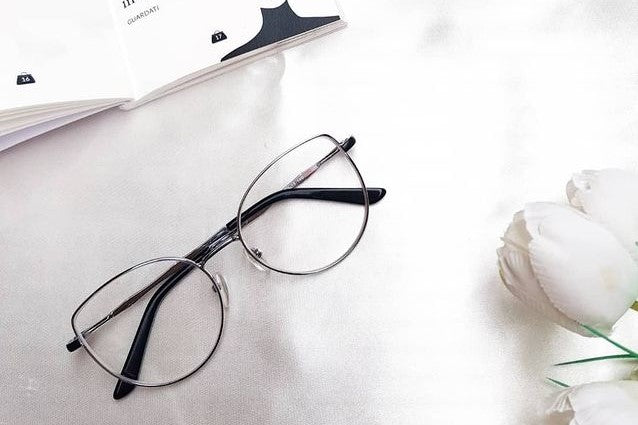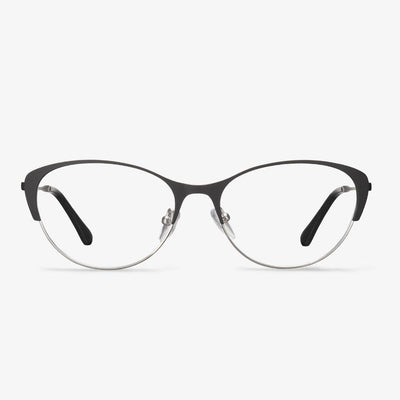3 Common Problems with Progressive Lenses
Though progressive lenses are popular to correct some eye conditions, there are also some drawbacks. So, in the following section, we will show you some common problems with progressive lenses.
Dizziness: the three different focal lengths of progressive lenses can make people susceptible to dizziness, as well as vertigo. From long to medium to short distance, the lenses offer a gradient of increasing strength. So, it would have trouble in adapting the glasses for the people who are wearing them for the first time. A common mistake is to look out of the wrong focal length, causing their vision to be blurry and lead to an overall feeling of dizziness.
Peripheral distortion: another common problem of progressive lenses is the way in which they blur peripheral vision. Most glasses cause an initial distortion to vision. However, the three different segments found in these lenses can make that distortion feel more prominent than other pairs of eyeglasses. And most people may need two weeks to adjust to progressive lenses.
Depth perception: Since progressive lenses provide three different prescriptions to see objects clearly for different distances, it is important that you need to move your head instead of your eyes when focusing on objects at different distances. Prior to adjusting to this little nuance, progressive lenses can cause depth perception to feel off.
From the above information, you have known some common problems with progressive lenses. So, you may ask how to adjust the progressive lenses. The most popular way is that you need to wear them frequently.
How to repair rimless glasses?
First, insert the wire into a small hole in the glasses near the bridge. Pass it in and out near the bridge, then repeat the process on the other side near the temple. Once you have the thread locked, you can place the lens. Insert it into the frame and place the wire in the built-in groove. Tighten the wire so it holds the lens perfectly, then trim it to the left. Reinsert the lens into the rimless glasses. Do not try to force it back in. The best way is to cut the wires completely and replace them with new ones. Use the same process as replacing wires. To prevent glasses from popping out, tighten the wires regularly.
How to Pop Lenses Out of Glasses with Plastic Frames?
In this section, we will show you how to take glasses out of plastic frames. It would be much easier to remove lenses from plastic frames because lenses are not fitted as tightly in them as in metal frames.
Now, here is the tutorial.
- Many plastic lenses will come out easily as you push through your thumb from the inner side and fix your fingers on the other side.
- If they do not come off, you can choose to heat the plastic a little bit so that it expands and allows the lenses to come out.
- To heat the plastic frames, you can immerse the glasses in a bowl of hot water. The water should be hot, not warm but of course only as much as you can handle amicably.
- Be careful to not drop your lenses in the bowl. Dry them with a no microfiber cloth and then you can remove them. You can’t use any towels because those can damage any blue light or anti reflective covering.
After all steps are finished, you can remove lenses from glasses.
Silhouette Glasses
Slim, refined and stylish are all words that could be used to describe the signature style of Silhouette, and the company is known for its rimless glasses design. They promote rimless glasses to the boundary without limits, with no frames, hinges, and screws. It is one of the few major manufacturers of glasses frames in Europe, making all its parts and assembling the products entirely in its own factory. They have created unprecedented product quality and an unmatched reputation in the eyewear industry.
Do Gaming Glasses Work?
Gaming glasses are similar to computer glasses. They work by countering the hue of the blue light with a yellow tint or amber tint glasses. Clear-lens gamer glasses are available, too. So, gaming glasses can help reduce eye strain and other effects of blue light caused by excessive screen time.
Difference between green film and blue film
In addition to the usual hardening, anti-fouling, anti-reflection, anti-radiation, and other functions, the green film has remarkable anti-ultraviolet performance, suitable for people who work outdoors for a long time to use. In addition to the general hardening, anti-fouling, anti-reflection, and anti-ultraviolet functions, blue film’s anti-radiation ability is very good, and it is suitable for computer workers and other people affected by radiation greater.
The coated lenses were originally produced in green, mainly to distinguish them from the uncoated lenses. At 515 nm, the reflection increases the reflectivity by about 2%, so there is a contrast, and the green film is seen in the reflection. This film is the most standard anti-reflective film, and it is the best and oldest one available.
Can you repair rimless glasses by yourself?
Splice the broken temple of the glasses into its original position on the glasses. Cut a piece of tape about 10cm long and pass it through the gap between the temple of the glasses and the base of the spring. Place the tape on the inside side of the glasses and tighten the other side with your hands. Then apply the outer tape to the temple of the glasses and press it down with your hand. Cut a piece of tape about twice the circumference of the bottom of the temple of the eyeglasses and stick it around the bottom of the temple of the eyeglasses. Cut a piece of tape about twice the circumference of the upper-middle part of the temple and use it to stick the top of the tape used in the first step. Then a piece of tape roughly twice the circumference of the middle leg of the glasses was used to tape the area between the two steps. Then repeat the previous step, and introduce another layer of tape from the gap on the outside of the adhesive tape. First, cut off a piece of tape as long as the temple of the glasses and stick the end of it to the bottom of the temple at an angle of about 60 degrees. Then tighten the other end with your hand, making it stick upward in a spiral until it covers all the tape in front.











































